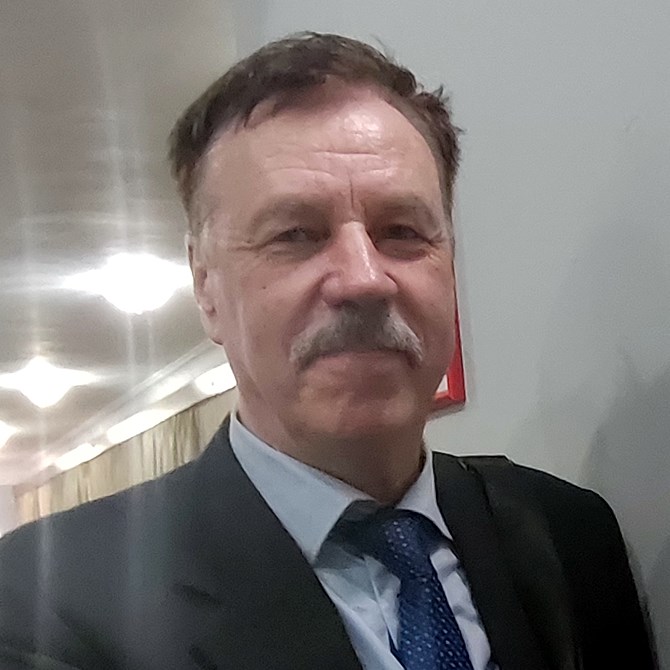Invited Speaker

Dr. Alexander Khotsianovsky
Senior Researcher, Pisarenko Institute of Problems of Strength,National Academy of Sciences of Ukraine (PIPS NASU), Kyiv, Ukraine
Speech Title: Evolution of the ΔKeff Concept for Long and Short Fatigue/Fretting Fatigue Cracks and Marci Effect Substantiation
Abstract: Durability of critical aerospace parts and heavy-duty equipment can be drastically reduced by contact stresses and fretting, promoting initiation of short cracks and their rapid propagation even in compressive residual stress fields. A combination of contact and bulk loads may generate very high stress intensity factors (SIFs) at the crack tip, which minimal and maximal values and their stress ratio R may vary with each loading cycle. Thus, prediction of fatigue crack growth rate (FCGR) under varied R is quite complicated. The issue of fitting experimental FCGR curves obtained for various R into a single ΔKeff-da/dN diagram has been repeatedly revisited after Elber’s crack closure concept emergence in 1972, its successful realization by Marci in the 1990s, and modification by Kuyawsky in 2010s. This report surveys modern approaches, in particular, the original methodology developed by the author at PIPS NASU based on DLR test equipment and methodology, in which Kmax was kept constant, and Kmin varied, yielding numerous R values and corresponding FCGR diagrams via a single specimen. FCGR was found to depend on the interaction of the cyclic stress field controlled by R with the static stress field proportional to Kmax. The original method of fitting various FCGR curves into a unified ΔKeff-da/dN diagram using spline functions has been proposed by the speaker and jointly published with Dr. Marci (DLR). Recently, the author applied this approach to predict fatigue and fretting fatigue crack rates in specimens from various steels, Ti, and Al alloys, including those with induced residual stress fields. A good fit of calculated and experimental results made it possible to extend this approach for predicting the durability of actual elements of aerospace equipment. The relevance of this research direction was proved by recent confirmation of the so-called "Marci effect", which implied catastrophic failure of several Ti and Al superalloys, including IMI 834, which occurred due to anomalously high FCGR at near-zero ΔK and high Kmax values, with no SIF threshold detected. Besides relating this effect to the joint action of generated voids and low-temperature creep in the crack tip, its mechanism is considered in the modified ΔKeff-da/dN diagram for short cracks proposed by the speaker and co-authors at PIPS NASU in 2024.
Keywords: Effective stress intensity factor, fatigue crack growth rate, fretting fatigue, stress ratio, Elber concept, crack closure, spline function, Marci effect, short crack.
Biography: Alexander Khotsianovsky graduated from Kyiv Polytechnical Institute as mechanical engineering researcher in 1982, attended post-graduate studies at the Pisarenko Institute of Problems of Strength of the National Academy of Sciences of Ukraine (PIPS NASU), Kyiv, Ukraine, and got his Ph.D degree in 1990. In 1990-1992, he performed R&D work for the Paton Welding Insitute of the NASU on numerical simulation and life prediction of critical elements of Mir orbital station, which had resulted in in-situ replacement and reinforcement of bearing components of the energy system of solar batteries. In 1993-1995, he worked as visiting researcher at German Aerospace Research Establishment (DLR), Institute of Material Research, Cologne, Germany. The main outputs were fretting-fatigue testing of aerospace materials and elaboration of the unified testing procedure based on the proposed modification of effective stress intensity factor for accelerated crack propagation tests of aerospace materials. From 1996 until present, he worked as senior research fellow at PIPS NASU, Kyiv. In 2014-2024, he successfully applied for several research grants of U.S. Office of Naval Research Global (ONRG) on optimizing the cavitator-induced ultra-speed motion of underwater vehicles in supercavities. Alexander Khotsianovsky has over 80 scientific publications. In 2013-2023, he presented six keynote and three invited speeches at several international conferences, including MSAM 2018 and MSAM 2019, and strongly contributed to organizing MSAM 2019 in Kyiv, Ukraine. Since 2002, he combined research activities with duties of executive secretary (until 2013), managing editor (until 2022), and associate editor (since 2022) of international journal Strength of Materials republished by Springer Nature.

